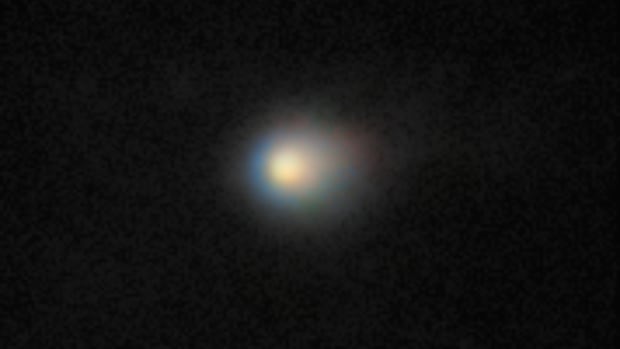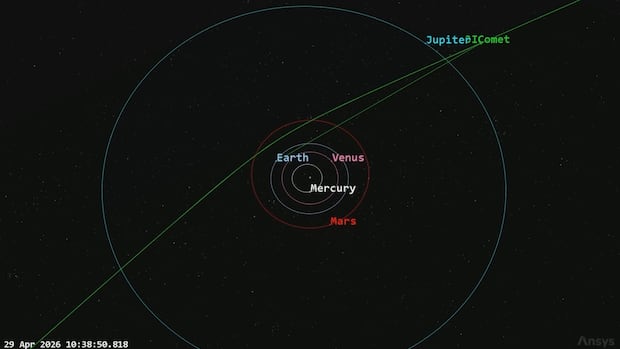It’s out of this world. Or, more accurately, this solar system.
On July 1, astronomers discovered an object near the orbit of Jupiter that was somewhat peculiar. It had a strange orbit, one that didn’t take it around the sun like most asteroids or comets.
Eventually it was confirmed that this object — named 3I/ATLAS, or C/2025 N1 (ATLAS) — was an interstellar visitor.
Now, using the U.S. National Science Foundation’s (NSF) Gemini North telescope in Hawaii, astronomers have captured the first detailed image of this cosmic interloper.
“We look forward to a bounty of new data and insights as this object warms itself on sunlight before continuing its cold, dark journey between the stars,” Martin Still, NSF program director for the International Gemini Observatory, said in a statement.
The comet will continue to be visible in large telescopes until September, after which it will be lost in the sun’s glare.
Learning more about the comet
“As this is only our third interstellar visitor ever discovered, we’re excited to learn about this entirely new class of object,” Paul Wiegert, an astronomy professor at Western University, told CBC News in an email.
Astronomers like to study comets and asteroids as they are left over from our solar system’s earliest formation and can reveal what conditions were like at the time. Being able to study something from outside of our neighbourhood could potentially provide more knowledge about other star systems.
Current observations suggest the comet is roughly 20 kilometres in diameter, far larger than the previous two interstellar comets astronomers observed passing through our solar system.
The first comet was ‘Oumuamua, which had a measly diameter of 200 metres. The second was 2I/Borisov, which was one kilometre in diameter.
The fact that 3I/ATLAS is so large is a boon to astronomers: It makes it easier to study, particularly as it nears Earth. It will make a close approach in December, but poses no threat.
A recent study presented by author Matthew Hopkins at the Royal Astronomical Society’s National Astronomy Meeting 2025 in Durham, England, suggests that this new visitor may be the oldest comet ever seen.
He estimates its origin to be from a part of our galaxy that is home to ancient stars, and says that it could be seven billion years old, far older than our galaxy’s 4.5 billion years.
And this new visitor is hustling: when it was discovered, it was travelling at roughly 61 kilometres per second.
How they know it’s not from our neighbourhood
Astronomers can determine the origin of comets or asteroids based on their orbits’ eccentricity, or how stretched out its path is.
An eccentricity of 0 means it is a perfectly circular orbit. An eccentricity greater than one means the orbit does not circle around the sun, and the higher the value, the more stretched out the orbit.
Astronomers have calculated the orbit of our third-known comet, seen here in this visualization. It will be closest to Earth in October.
In 3I/ATLAS’s case, its orbit is 6.2, which is how astronomers knew that it came from beyond the solar system. For comparison, ‘Oumuamua had an eccentricity of 1.2 and 2I/Borisov’s eccentricity was 3.6.
Currently, this new comet is still within Jupiter’s orbit, roughly 465 million kilometres from Earth. It will make its closest approach to our planet on Dec. 19, at a distance of roughly 270 million kilometres.
It will reach its closet point to the sun on Oct. 30 at a distance of 210 million kilometres, which will be just inside the orbit of Mars.
Though astronomers have quickly learned some things about this newest interloper, they hope to learn more over time.
“This one seems much like a comet from our own solar system. That is, mostly made of ice which has been frozen for billions of years as it wandered the galaxy, but now [is] starting to gently turn to vapour in the light of our sun. This makes 3I/ATLAS look fuzzy with a tail, visible in the image,” Wiegert said.
“But we really don’t know if it is like one of our comets (which are leftover building block from when the Earth and planets formed) or something completely different.”

